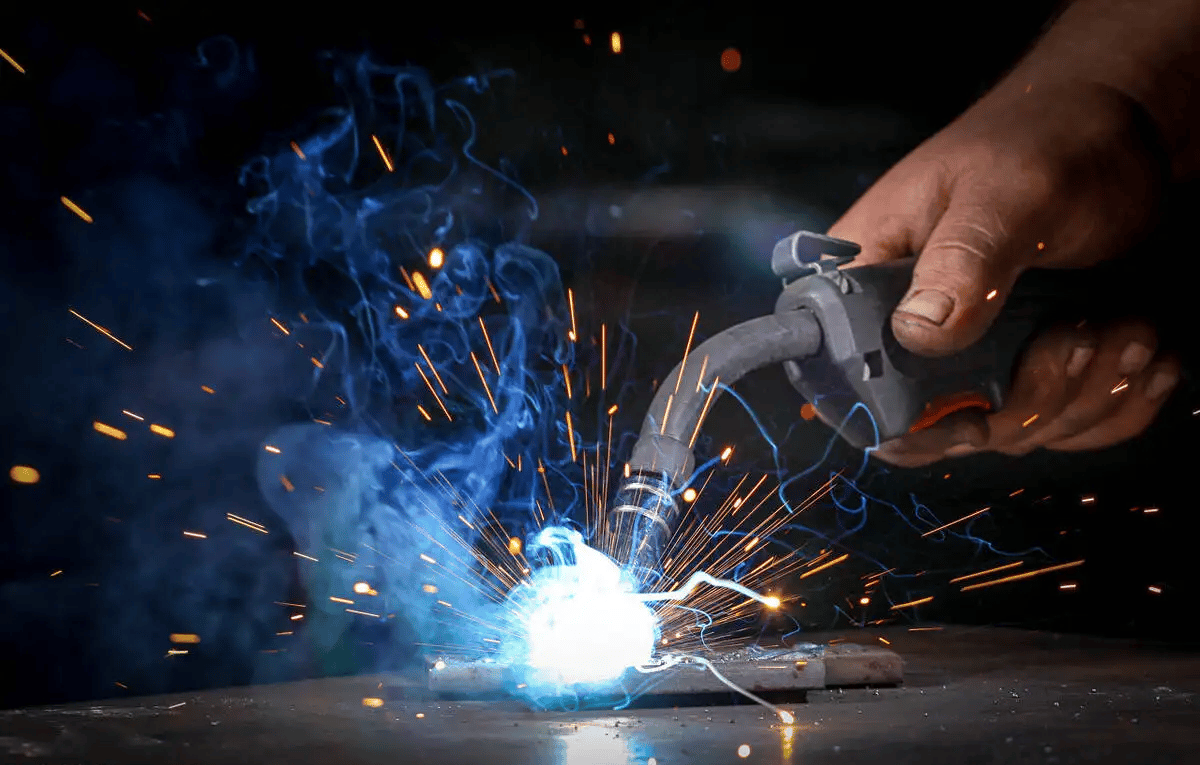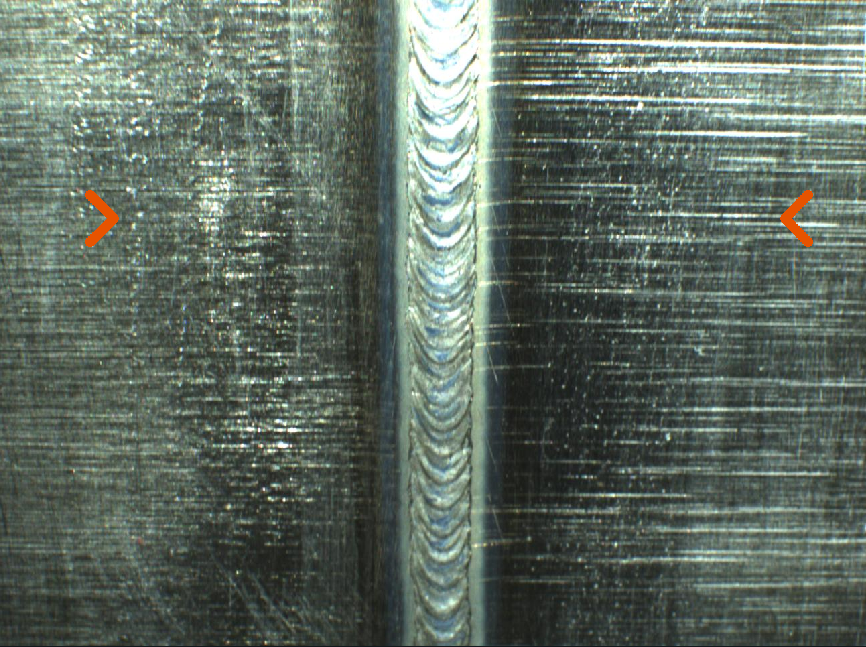What to Get out of a Comprehensive Welding Inspection Racine
What to Get out of a Comprehensive Welding Inspection Racine
Blog Article
Ingenious Techniques to Fillet Weld Assessment and Screening: Enhancing Weld Top Quality and Conformity Requirements
In the world of welding, the high quality and integrity of fillet welds play an essential function in guaranteeing the architectural strength and reliability of various commercial elements. With the consistent drive for boosted performance and compliance with rigorous requirements, the expedition of ingenious strategies to fillet weld assessment and testing has come to be necessary.
Advanced Non-Destructive Screening Techniques
Making use of cutting edge modern technologies, advanced non-destructive screening techniques play an essential duty in guaranteeing the honesty and quality of fillet welds. These approaches, such as phased array ultrasonic testing (PAUT) and magnetic fragment testing (MPT), offer thorough insights right into the weld's internal structure without triggering any kind of damage to the material. PAUT, for example, utilizes several ultrasonic aspects to evaluate the weld from various angles, supplying a thorough visualization of potential flaws like lack of blend or splits.
By employing these advanced non-destructive testing strategies, weld inspectors can precisely evaluate the quality of fillet welds, ensuring conformity with market requirements and policies. The ability to detect defects early on not only enhances weld quality yet additionally prevents pricey rework or failures in structural honesty, highlighting the importance of these innovative screening methods in welding inspections.
Robotics and Automation in Examination
The combination of robotics and automation has changed the assessment process for fillet welds, boosting efficiency and precision in high quality assessment. Robotics offer specific control and repeatability in evaluating welds, making certain constant and dependable results. Automated systems can be programmed to comply with specific assessment paths, making sure thorough protection of welds and reducing the danger of human mistake.
Robotic inspection systems outfitted with sophisticated sensing units can discover and gauge weld features with high accuracy, providing comprehensive information for analysis. These systems can recognize defects such as fractures, absence of fusion, and porosity, allowing punctual restorative activities to be taken. In addition, robotics and automation permit real-time information collection and analysis, providing immediate feedback to drivers and facilitating quick decision-making procedures.
In addition, using robotics and automation in fillet weld evaluation improves general performance by reducing examination times and raising assessment throughput. By improving the evaluation procedure, producers can make certain weld top quality and compliance standards are satisfied effectively, eventually causing set you back financial savings and improved item high quality.
Using Expert System for Evaluation
Fabricated intelligence plays a pivotal function in enhancing the performance and precision of analysis in fillet weld examination processes. AI formulas can quickly process substantial quantities of data from weld examinations, finding problems or incongruities that may be testing to determine with the nude eye - Welding Inspection Racine.
In addition, AI systems can gain from previous inspection data, consistently enhancing their capacity to identify prospective flaws and deviations in fillet welds. This adaptive discovering capacity enhances the overall quality assurance procedure, reducing the possibility of human mistake and making certain that welds meet the required requirements. By incorporating fabricated knowledge into fillet weld analysis, markets can attain higher levels of effectiveness, uniformity, and conformity in their examination techniques.
Portable Tools for On-Site Inspection
 Enhancing area inspection efficiency, the adoption of portable devices changes on-site analysis processes for fillet welds. These tools provide you could try this out versatility and comfort, permitting assessors to perform comprehensive evaluations in different places, consisting of difficult or remote atmospheres. Mobile tools such as ultrasonic testing devices, magnetic particle inspection devices, and electronic radiography systems give real-time information and high-resolution imaging capacities, enabling fast decision-making and prompt comments on weld top quality.
Enhancing area inspection efficiency, the adoption of portable devices changes on-site analysis processes for fillet welds. These tools provide you could try this out versatility and comfort, permitting assessors to perform comprehensive evaluations in different places, consisting of difficult or remote atmospheres. Mobile tools such as ultrasonic testing devices, magnetic particle inspection devices, and electronic radiography systems give real-time information and high-resolution imaging capacities, enabling fast decision-making and prompt comments on weld top quality.One significant benefit of portable tools is their ability to improve examination treatments, minimizing downtime and improving general productivity. Inspectors can conveniently move these devices to various job sites, removing the demand for delivering heavy machinery or parts to off-site centers. Additionally, the portability of these devices promotes cost-effectiveness by minimizing transportation expenditures and speeding up inspection timelines.
Moreover, using portable devices for on-site assessment promotes aggressive quality assurance steps, as inspectors can without delay determine and address any type of potential welding issues or inconsistencies. By incorporating these ingenious technologies right into on-site inspection methods, welding professionals can make sure compliance with market standards and improve weld from this source quality, eventually leading to enhanced architectural integrity and safety and security in various welding applications.
Combination of Information Administration Equipment
Having enhanced on-site examination processes via the utilization of mobile devices, the next phase entails the seamless assimilation of information management systems to additionally boost efficiency and data evaluation capacities in fillet weld inspection and testing. Welding Inspection Racine. By incorporating information management systems into the assessment procedure, organizations can enhance information collection, storage space, and analysis. This combination enables for real-time surveillance of weld top quality, immediate identification of problems, and timely decision-making to remedy any kind of issues that may emerge during the evaluation process
Data management systems play a vital duty in centralizing inspection data, helping with simple gain access to for licensed workers, and guaranteeing data integrity and safety and security. With the combination of these systems, inspectors can generate comprehensive reports, track historical information for fad browse around this web-site evaluation, and enhance general process efficiency. In addition, the assimilation of information administration systems allows seamless interaction in between different stakeholders included in the inspection process, cultivating cooperation and boosting general quality control steps. Inevitably, the combination of data administration systems serves to boost the requirements of fillet weld inspection and screening, guaranteeing conformity with market regulations and improving weld high quality.
Conclusion
To conclude, ingenious techniques to fillet weld evaluation and screening have considerably improved weld high quality and compliance standards. Advanced non-destructive screening approaches, robotics, automation, synthetic knowledge, mobile devices, and data management systems have reinvented the means weld inspections are carried out. By using these modern technologies, industries can ensure that welds satisfy the needed top quality criteria and regulations, ultimately improving general effectiveness and security in welding procedures.

By utilizing these sophisticated non-destructive testing methods, weld examiners can accurately evaluate the quality of fillet welds, guaranteeing compliance with industry criteria and laws. Mobile devices such as ultrasonic testing gadgets, magnetic particle inspection equipment, and electronic radiography systems give real-time information and high-resolution imaging abilities, allowing quick decision-making and immediate responses on weld high quality.
Having optimized on-site inspection processes through the utilization of mobile tools, the next stage includes the seamless integration of information administration systems to even more enhance performance and data analysis capacities in fillet weld assessment and testing (Welding Inspection Racine). Inevitably, the combination of data monitoring systems serves to elevate the criteria of fillet weld assessment and testing, making certain conformity with industry laws and improving weld quality
 In final thought, ingenious approaches to fillet weld examination and testing have dramatically improved weld quality and conformity requirements.
In final thought, ingenious approaches to fillet weld examination and testing have dramatically improved weld quality and conformity requirements.Report this page